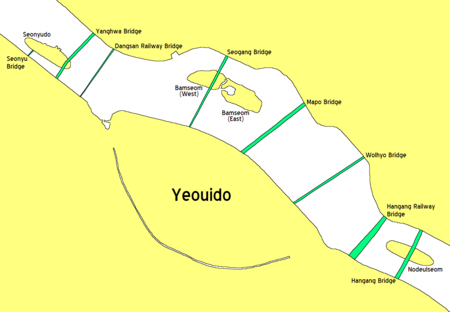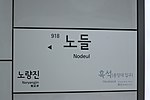Nodeulseom
AC with 0 elementsArtificial islands of South KoreaIslands of SeoulRiver islands of South KoreaSouth Korea geography stubs ... and 1 more
Uninhabited islands of South Korea

Nodeulseom an artificial island in the River Han in Seoul, South Korea. The uninhabited island is located to the east of the larger island of Yeouido. Hangang Bridge passes directly over the island. On September 28, 2019, the island was re-opened as a music-themed cultural complex following a four-year renovation project. On the island, there are various cultural facilities including an outdoor music space, bookstore, a large green open area and a two meter moon art installation called Moonlight Nodeul.
Excerpt from the Wikipedia article Nodeulseom (License: CC BY-SA 3.0, Authors, Images).Nodeulseom
Hangang-daero, Seoul Ichon 1(il)-dong
Geographical coordinates (GPS) Address Nearby Places Show on map
Geographical coordinates (GPS)
| Latitude | Longitude |
|---|---|
| N 37.516944444444 ° | E 126.96 ° |
Address
노들섬
Hangang-daero
04379 Seoul, Ichon 1(il)-dong
South Korea
Open on Google Maps







